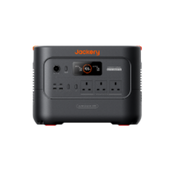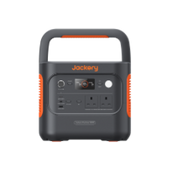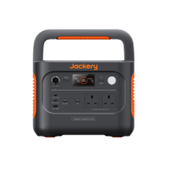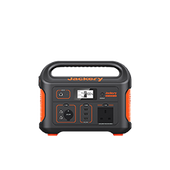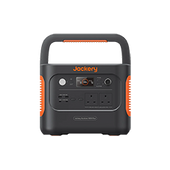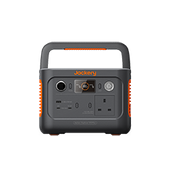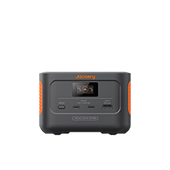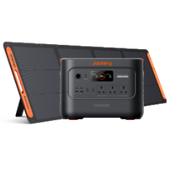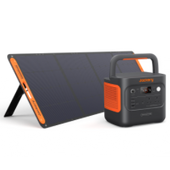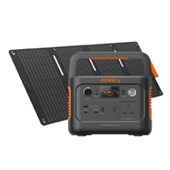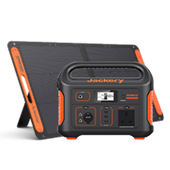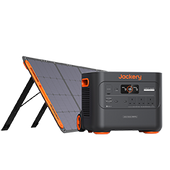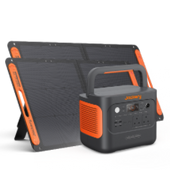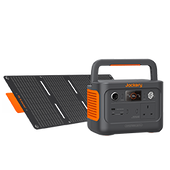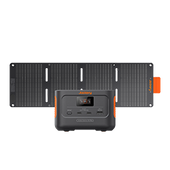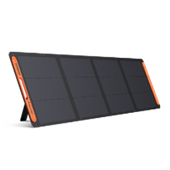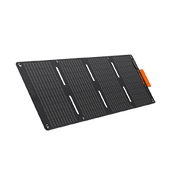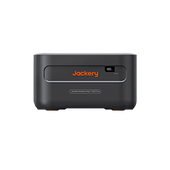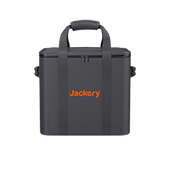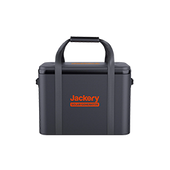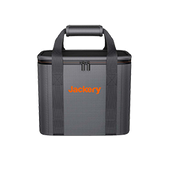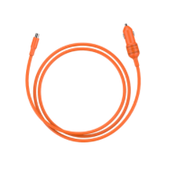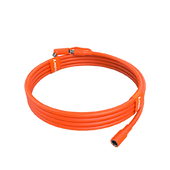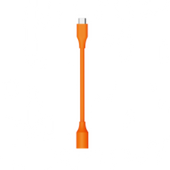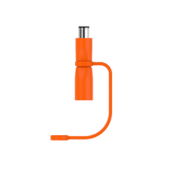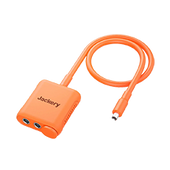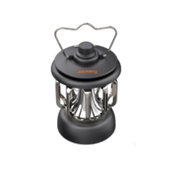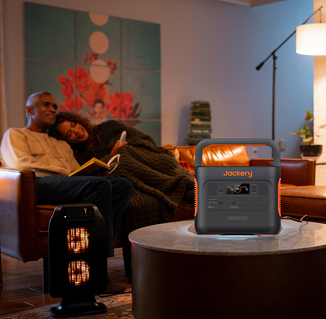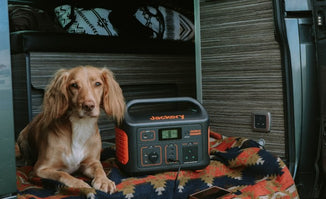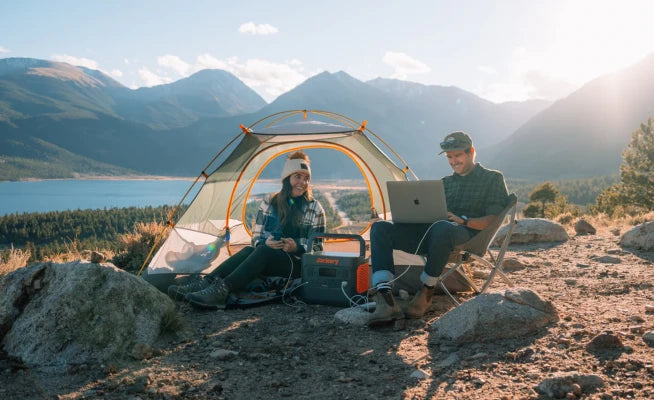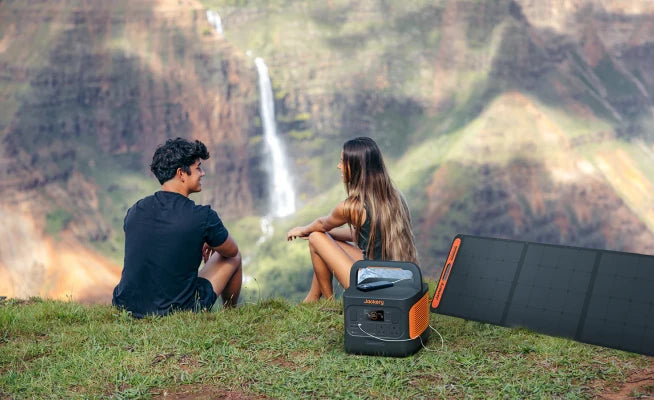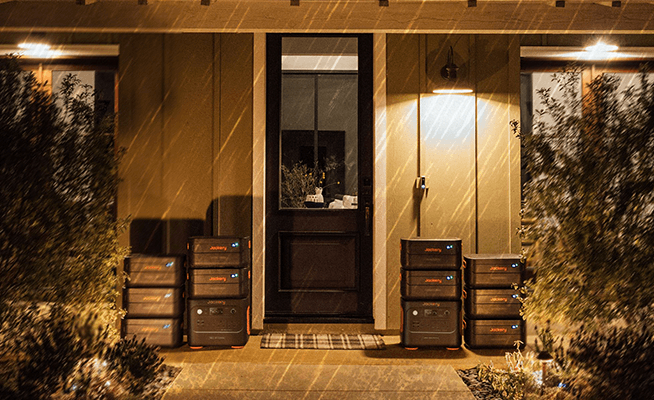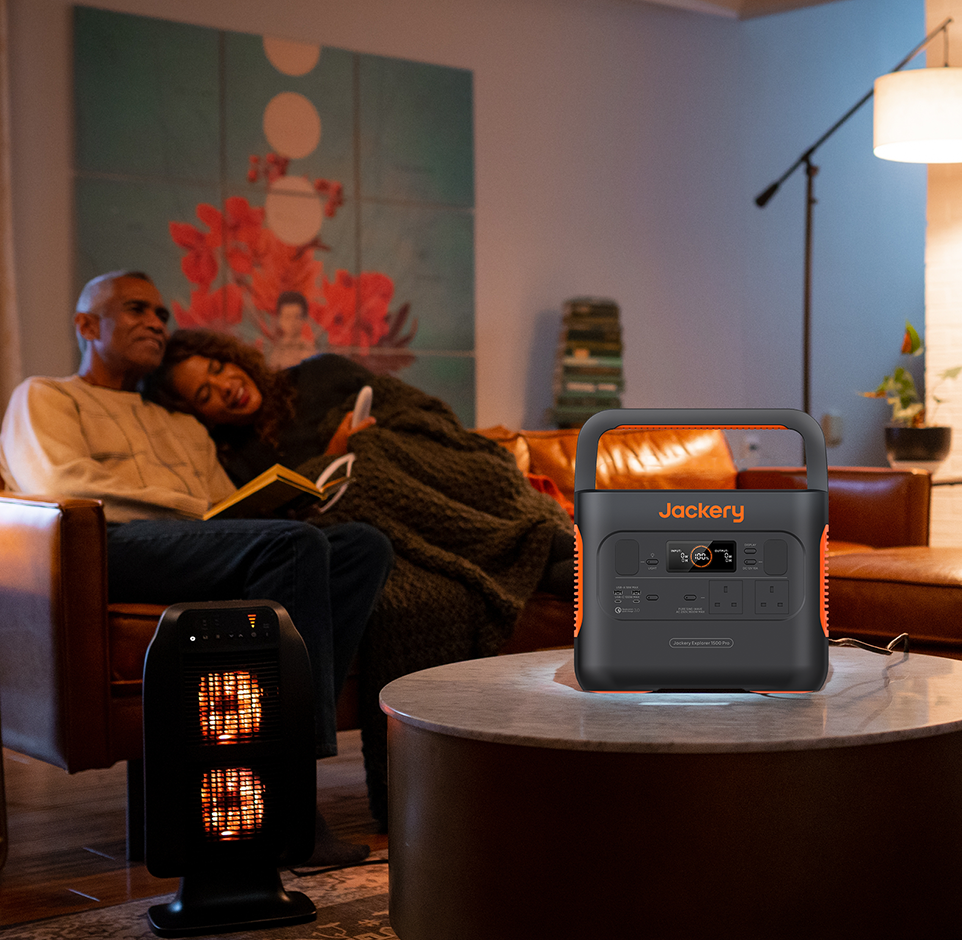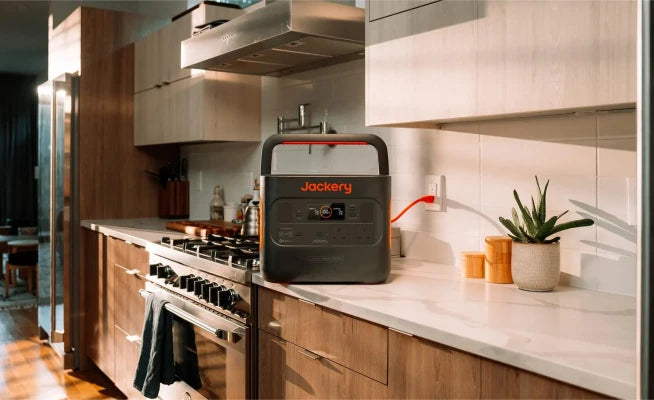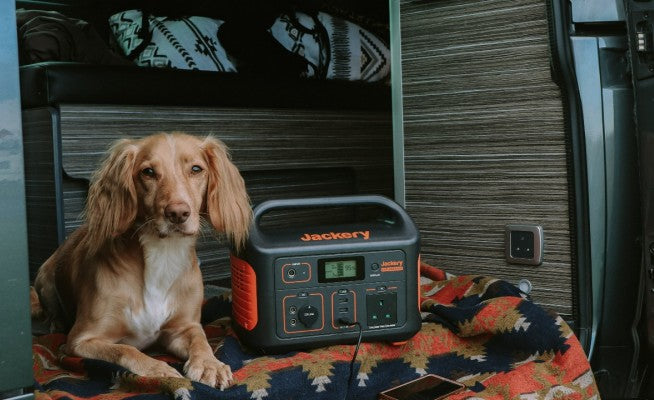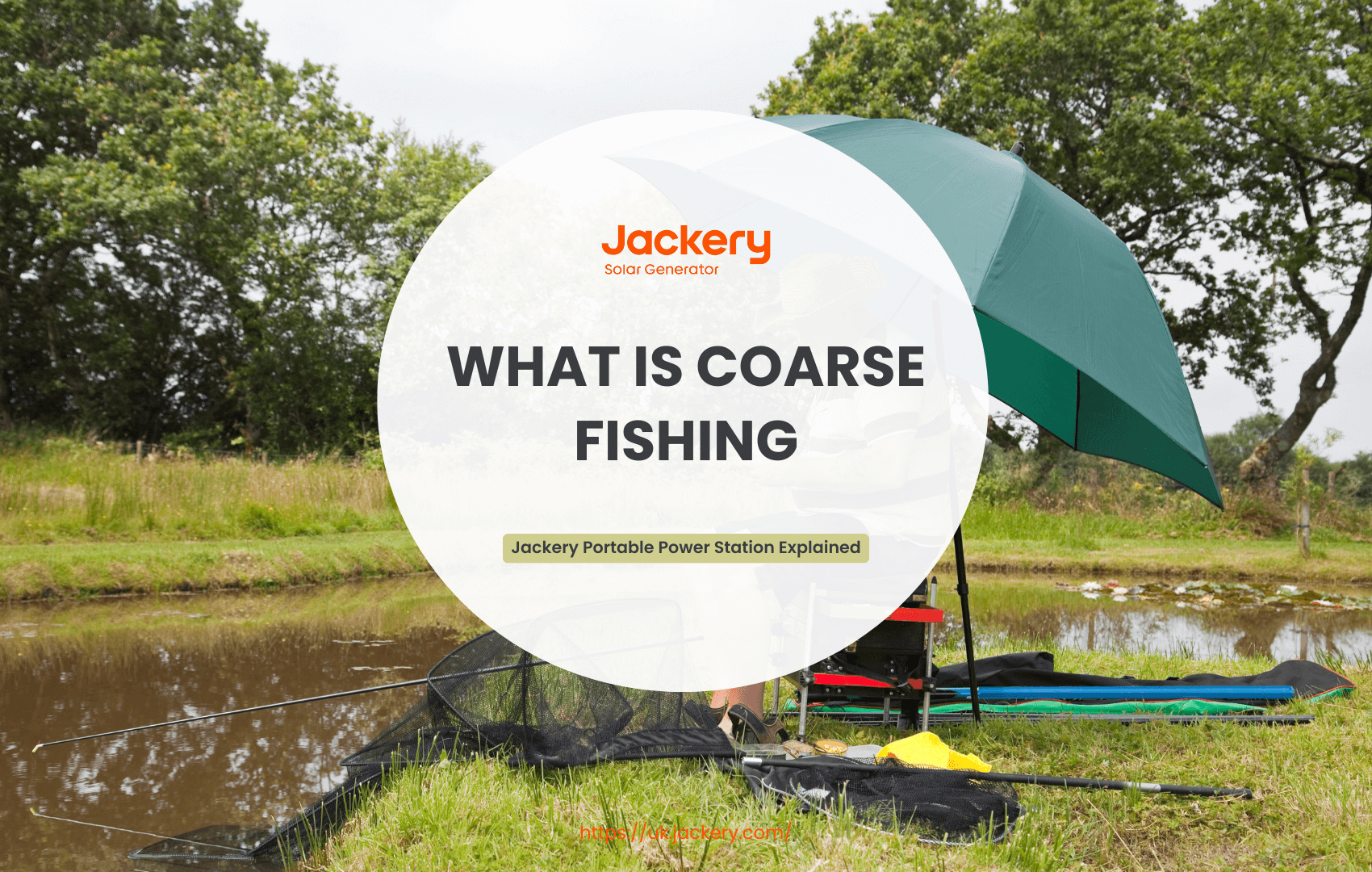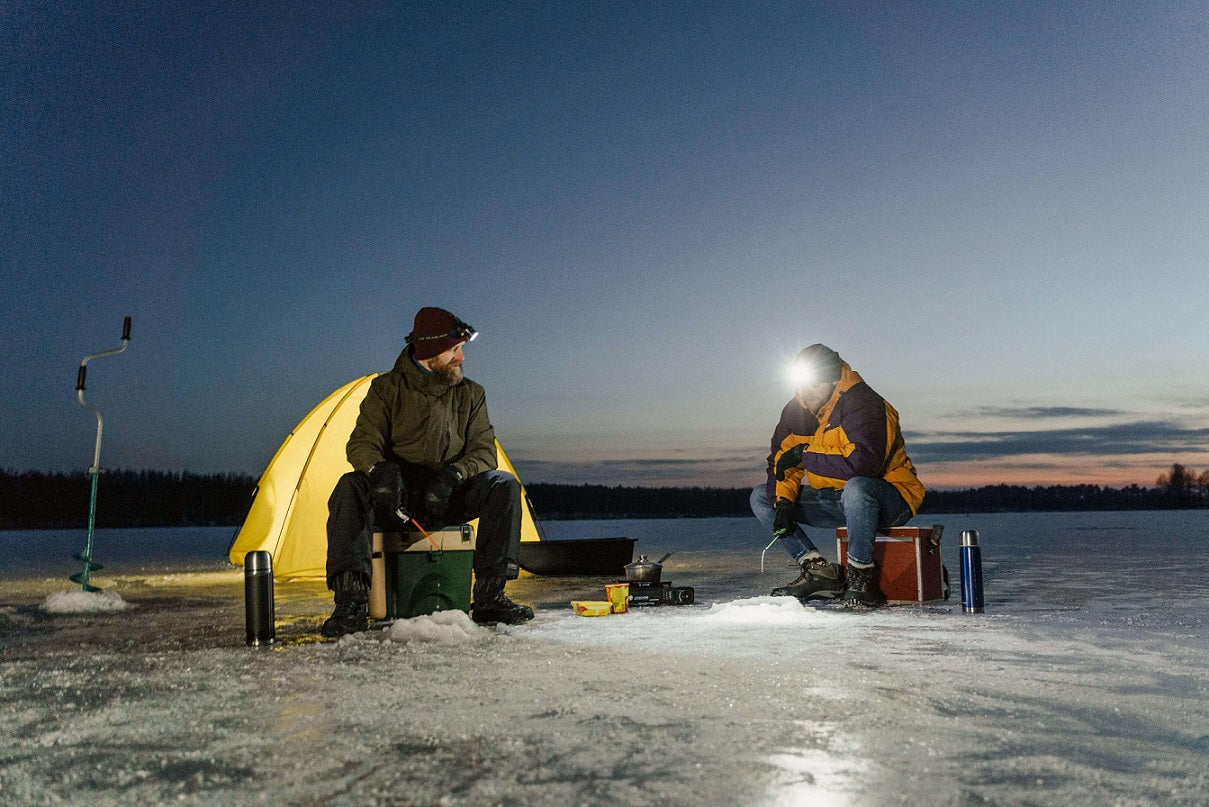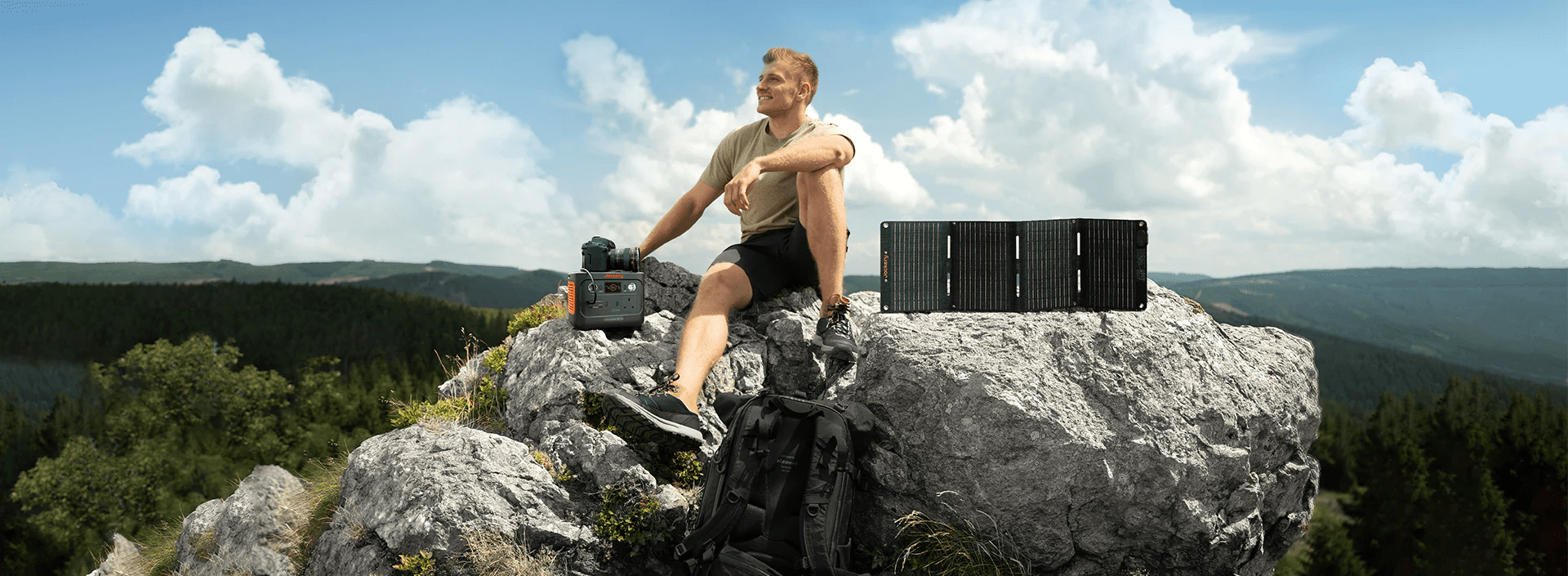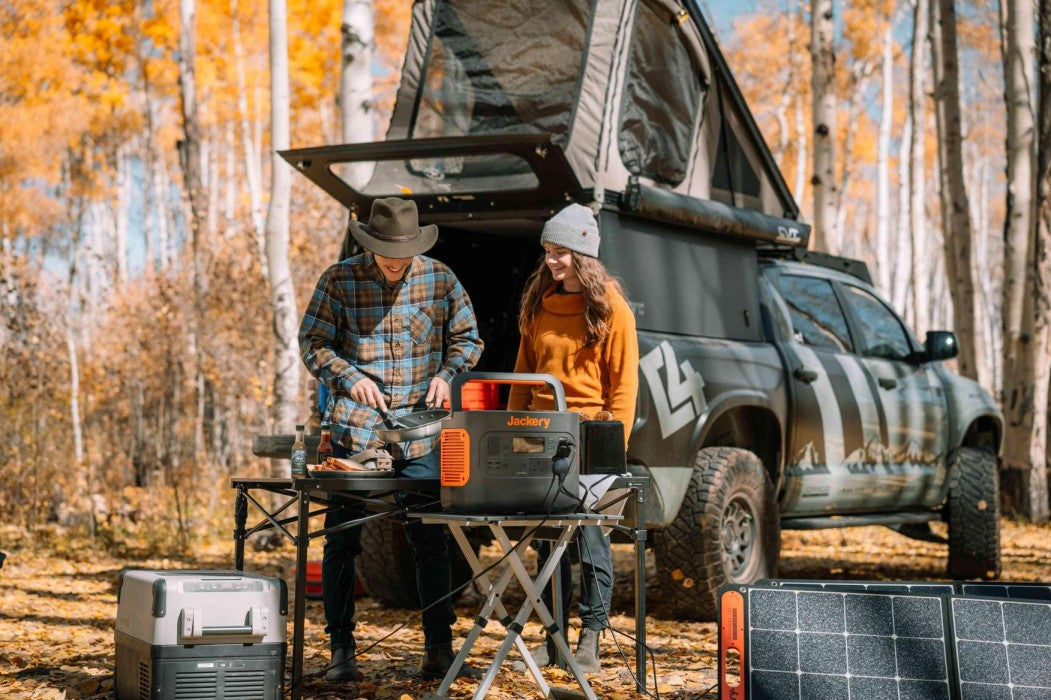One of the most popular types of fishing in the UK is coarse fishing, which offers a fun and accessible way to experience nature. Coarse fishing focuses on freshwater species that are not salmonids, like carp, roach, bream, and perch, in contrast to game or sea fishing.
Knowing the species, tackle, regulations and best practices is crucial for a successful trip, whether you're casting into a calm canal or a thriving commercial fishery. This guide explains all you need to know to enjoy coarse fishing with confidence, from necessary equipment and regulatory requirements to seasonal advice and the best places to go in the UK.
We also highly recommend the Jackery Portable Power Station, a portable power source designed for powering electronics and devices while fishing, especially for overnight fishing.
|
Key Takeaways: |
|
- Coarse fishing targets freshwater species such as carp, perch, and roach, which are not considered game fish. - To save spawning fish, the UK prohibits coarse fishing on rivers between March 15 and June 15. - The River Wye, Larford Lakes, and Broom Fisheries are popular coarse fishing locations in the UK, offering a diverse range of settings. - Since still waters are predictable and have a healthy fish population, they are the best place for beginners to start. - We highly recommend Jackery Explorer 100 Plus and 300 Plus portable power stations to power the electronics and devices when coarse fishing. |
What Is Coarse Fishing?
In the UK, coarse fishing is a common type of freshwater angling that focuses on freshwater fish species other than trout and salmon. Catching several types of coarse fish, such as carp, roach, bream, perch, tench, and pike, is part of the activity. Across the nation, these fish typically inhabit rivers, lakes, canals, and reservoirs.
Defining Coarse Fishing
In particular, freshwater fish that are not game fish are the focus of coarse fishing. Coarse fishing includes a wider variety of species, typically found in still or slower-moving waters, than game fishing, which focuses on salmon and trout. It is among the most popular forms of fishing, and fishermen of all skill levels love it.
How Coarse Fishing Differs from Game Fishing?
The species targeted, along with the fishing techniques employed, reveal the main distinctions. Salmon and trout are the primary targets of game fishing, which often requires specialised methods, such as fly fishing. On the other hand, coarse fishing employs methods such as legering, match fishing, and float fishing to target a wide range of species. Baits used in this type of fishing include boilies, sweetcorn, worms, and maggots.
Difference Between Coarse and Sea Fishing
Unlike sea fishing, which takes place in saltwater locations such as seas and estuaries, focusing on species like bass, cod, and mackerel, coarse fishing occurs in freshwater settings. Because it is possible to perform coarse fishing from the shorelines of inland waters without the need for boats or specialised sea fishing equipment, it is typically more accessible.
Popularity and Accessibility
Due to the numerous fishing tactics and species available, coarse fishing is popular among a diverse range of people. In addition to being a competitive sport, it can also serve as a leisurely pastime. Additionally, many fishermen engage in catch-and-release practices, which support sustainable fishing conditions and help preserve fish populations.
The Most Common Coarse Fishing Species in the UK
Due to its abundance of freshwater coarse fish species, the UK is a top destination for fishermen seeking a diverse range of fishing experiences. Coarse fish, such as carp, roach, bream, perch, tench, chub, and pike, are among the most commonly targeted species. Because of their distinct behaviours, favoured habitats, and feeding habits, each species presents a distinctive set of difficulties.

Carp
In the UK, carp are among the most well-liked and sought-after coarse fish. Across the nation, carp live in lakes, canals, and sluggish rivers and are renowned for their size, power, and intelligence. To attract carp, fishermen frequently use specific baits such as boilies, pellets, and sweetcorn. Due to its ability to reach considerable sizes, carp fishing has garnered a devoted fan base, complete with custom gear and methods such as spod mixtures and hair rigs.
Roach and Bream
Common coarse fish species in many UK waters are bream and roach. Breams are larger fish with a characteristic bronze sheen, whereas roaches are smaller, silvery fish that live in rivers and stillwaters.
Catching both species typically involves float fishing with natural baits, such as worms, casters, or maggots, and they tend to school. They are perfect for novices and match anglers because of their schooling tendency, which allows them to catch several fish in a single session frequently.
Perch
The bright red fins and dark vertical stripes on the green bodies of the perch make them easy to see. They are predatory fish that typically inhabit sluggish rivers and weedy lakes, where they hunt insects and smaller fish. Because of their aggressive strikes and fierce fighting nature, perch are a favourite among lure-fishing enthusiasts and offer great excitement even when using small equipment.
Tench and Chub
Tench, frequently referred to as the "doctor fish" due to outdated notions about the therapeutic qualities of its slime, prefers quiet or slowly flowing rivers that are abundant in flora. They are a rewarding target for patient anglers due to their olive-green bodies and their tendency to be quite elusive.
Chub, on the other hand, are powerful river fish that are well-known for their will to battle. They are frequently found near objects such as overhanging banks or fallen trees. Coarse fishing becomes more varied because each species has different needs in terms of bait and technique.
Pike
In the UK, the pike is essential to coarse fishing despite being frequently seen as a distinct predator species. They are the largest freshwater fish in the nation, and due to their size and aggressiveness, they present an exciting challenge. Pike fishermen employ specific techniques such as live baiting, dead baiting, and lure fishing. Strong tackle and cautious handling are necessary due to their strong runs and keen fangs.
Where and When Can You Go Coarse Fishing in the UK?
A popular activity among fishermen in the UK, coarse fishing allows one to take in the scenery while pursuing a range of freshwater fish species. A successful and responsible coarse fishing experience, however, depends on knowing the finest spots and the authorised fishing seasons. This section examines the best places to fish, the optimal seasons for fishing, and significant laws, such as the closed season, that safeguard fish stocks.
Where Are the Best Places for Coarse Fishing?
Rivers, lakes, canals, and reservoirs are just a few of the freshwater places where anglers can find great possibilities for coarse fishing, which is quite popular throughout the United Kingdom.
The River Thames, the Norfolk Broads, Rutland Water, the Trent Valley, and the numerous lakes and canals dotted around England, Scotland, Wales, and Northern Ireland are some of the best places to go coarse fishing. Often regulated to enhance fishing quality, these waters are home to a diverse range of coarse fish populations.
Both novice and match anglers will find stocked waterways at many public fisheries and commercial angling venues to be perfect. Furthermore, local fishing organisations often oversee sections of lakes or rivers where their members can fish throughout the year. Obtaining the appropriate permits or fishing licenses is frequently a prerequisite for knowing where to fish.
What Time of Day Is Ideal for Coarse Fishing?
Although coarse fishing is possible throughout the year in the UK, the seasons have a significant impact on the availability and success of various species. Since fish are more active and feed intensively after spawning, the spring and summer months are typically the most productive. Due to the cooler temperatures and increased fish activity during these months, the best times to fish are in the early morning and late evening.
For species like carp, who eat a lot to get ready for winter, autumn can also be a good time of year. Since fish are generally less active in cooler water, winter fishing is feasible but more difficult.
Recognising the Closed Season for Coarse Fishing
Many rivers and streams in the UK have a closed season, usually from March 15 to June 15, to save coarse fish during their crucial spawning season. Fishing for coarse species like roach, chub, dace, barbel, and grayling is prohibited in certain waters during this period.
By enabling breeding fish to spawn without interference, this closed season contributes to the sustainability and health of fish populations. During the closed season, fishermen are encouraged to adhere to these rules and seek alternative fishing locations, such as still waters, where there is no restricted season.
What About Canals and Stillwaters?
Subject to local regulations, many still waters, canals, and commercial fisheries remain open throughout the year and do not have a closed season, unlike rivers. This allows fishermen to go coarse fishing on rivers throughout the year, even during the closed season. For precise rules and hours of operation, always verify with the appropriate fishery or angling club.
Essential Coarse Fishing Gear for Beginners
Coarse fishing might be intimidating when you first start, but with the correct equipment and information, it can be a really fulfilling outdoor pastime. In addition to increasing your chances of success, using the right equipment makes fishing safer and more enjoyable.
A comprehensive beginner's guide to everything you need to get started, including rods, bait, and even how contemporary portable power can improve your time on the bank, is provided below.

Coarse Fishing Rods and Reels for Beginners
A coarse fishing rod should be appropriate for the type of fishing you plan to conduct, such as legering, feeder fishing, or float fishing. A 10- to 12-foot match rod is the best option for novices because it strikes a nice balance of control and reach, especially on still waters like lakes and canals.
Reels are similarly significant, and the majority of beginners opt for a fixed spool reel due to its ease of use and adaptability. It is easy to pair with monofilament lines that are appropriate for general-purpose angling and are ideal for both feeder and float fishing.
Key Accessories: Hooks, Floats, and Nets
Additionally, your tackle box should contain split shot weights, a selection of floats (used to detect bites), and a range of hooks (sizes 10 to 20) to accommodate various species. Float types include stick floats for rivers and waggler flies for Stillwater.
For the safe landing of fish, particularly larger species like carp or bream, a landing net is essential. When fishing in matches or recording multiple catches in a single session, many fishermen often carry a keepnet to store their catches temporarily.
Practical Tools and Comfort Items
Remember to pack equipment such as bait boxes, unhooking mats, seat boxes or folding chairs for comfort, and disgorgers for properly removing hooks. Bank sticks and rod rests keep your fishing equipment in place during extended fishing sessions, and polarised sunglasses assist in cutting down on water glare and enhance fish spotting.
Baits and Groundbaits
Choosing the right bait is essential for coarse fishing. Maggots and worms are natural baits that work well for the majority of freshwater species in the UK, so beginners should start with them. Sweetcorn, bread, luncheon meat, and boilies are further possibilities for catching larger fish, such as carp. By dispersing particles and fragrance into the water column, ground bait can help draw fish to your swim.
Modern Fishing Essentials: Jackery Power Stations
Nowadays, many fishermen bring technological equipment to the bank, including cell phones, cameras, bait boats, and fish finders, necessitating portable power sources. The Jackery Explorer 100 Plus and Jackery Explorer 300 Plus are useful and dependable options in this situation.
With a 128Wh capacity, the Jackery Explorer 100 Plus is a lightweight, portable power station that is ideal for charging action cameras, tiny LED lights, and phones. It is quite convenient for short day sessions because of its dual USB-C and USB-A outputs and quick 1.8-hour USB-C recharge time.
For extended fishing excursions, the Jackery Explorer 300 Plus's bigger 288Wh capacity is perfect. It features multiple output connections (AC, USB-C, and USB-A) to meet all your demands and can power devices such as bait aerators, fish finders, and even a small camping refrigerator. Since all types are solar-compatible and incredibly quiet, you can still enjoy modern comforts and the outdoors without any interruptions.

Jackery Portable Power Station for Fishing
Many modern fish finders and sonar units require a power source. A Jackery Portable Power Station can keep these running for hours, helping you locate fish and underwater features. If you use an electric bait boat, a Jackery can recharge its batteries multiple times, ensuring you can deploy bait and rigs accurately throughout your session.
Fishing often takes you to remote locations where traditional power sources are unavailable. A Jackery provides independent power, allowing you to stay longer and fish more effectively without worrying about running out of juice.
Unlike noisy, gas-powered generators, a Jackery is silent. This is crucial for not disturbing the fish or other anglers and for maintaining the peace and tranquillity of nature.
Jackery Explorer 100 Plus
The Jackery Explorer 100 Plus is a niche but incredibly effective choice for coarse fishing in the UK, particularly for anglers who prioritise extreme portability, airline compatibility, and essential device charging with 99Wh capacity. It's not about powering a whole bivvy but about ensuring your crucial electronics stay alive.

Ultra-Portability and Lightweight Design: Weighing in at just 2.1 lbs (0.965 kg) and incredibly compact (roughly the size of a large smartphone), the 100 Plus is the lightest and smallest power station in Jackery's lineup. This is its absolute killer feature for coarse fishing. You can toss it in a tackle box, rucksack, or even a large jacket pocket. It adds virtually no noticeable weight or bulk to your already extensive fishing gear, which is critical when you're walking along riverbanks or lake shores.
Multiple Ports: Modern fishing gear increasingly uses USB-C for fast charging. The 100 Plus's 100W USB-C output can rapidly charge compatible smartphones, tablets, and even lightweight laptops, minimising downtime. With two USB-C and one USB-A port, you can charge multiple devices simultaneously, which is a huge convenience at the end of a long day for coarse fishing.
Long-Lasting Investment: Like its larger siblings, the 100 Plus uses LiFePO4, offering 2,000 charge cycles to 80%+ capacity. For a relatively inexpensive unit, this means it will last you for many years of fishing trips. The inherent stability of LiFePO4 is a significant advantage when dealing with electronics in outdoor and potentially damp conditions.
Discreet and Quiet: No noise, no fumes. This is essential for not disturbing the fish or other anglers and for maintaining the peace of your fishing environment.
Jackery Explorer 300 Plus
The Jackery Explorer 300 Plus strikes a near-perfect balance for many coarse fishing trips in the UK, offering a significant upgrade in capacity and versatility compared to the ultra-compact 100 Plus, while remaining highly portable.

Solid Capacity for Extended Sessions: The 288Wh capacity is enough to comfortably power your essential fishing gear and personal electronics for a full weekend trip or even a few shorter day sessions without needing a recharge. The 300 Plus can provide multiple recharges for most standard bait boat batteries, which can be power-hungry and crucial for carp or specimen fishing.
While not suitable for large domestic fridges, the 300 Plus has sufficient capacity to run a small, efficient 12V portable cooler or cool box, keeping bait fresh and drinks chilled for a good portion of the day or overnight. This is a massive comfort for the bank.
Versatile Power Output: The 300W pure sine wave AC output is powerful enough to run many standard chargers for your fish finders, camera batteries, drone batteries, and even some smaller laptops. The 600W surge handles the initial power draw of some devices.
Fast USB-C PD (100W In/Out): This is a huge benefit for modern coarse anglers. You can rapidly charge high-draw phones (like newer iPhones and Androids), tablets, and even some USB-C-powered laptops directly from the Jackery, minimising downtime.
Built to Last: With 3,000 cycles to 80%+ capacity, this power station is designed for years of regular use on the bank. You won't need to replace it anytime soon, making it a sound investment. The inherent stability of LiFePO4 batteries means greater peace of mind in outdoor conditions, reducing concerns about overheating.
Coarse Fishing Rules and Legal Requirements in the UK
It's crucial to comprehend the laws and obligations governing coarse fishing in the UK before putting out your line. These rules support habitat preservation, the preservation of fish populations, and the continued sustainability and fairness of fishing. It's crucial to understand what is and isn't allowed when fishing in a stillwater lake, canal, or river.
Do You Need a Fishing Licence in the UK?
Yes, to fish for freshwater species, including coarse fish, in England and Wales, a person aged 13 years or older must possess a current Environment Agency rod fishing licence. Although they can fish for free, children 13 to 16 still need to get a junior licence. Heavy fines of up to £2,500 might result from fishing without a licence.
Your licensing needs to cover the kind of equipment you're utilising. For coarse fishing, a regular licence usually allows for up to two rods. You can purchase or renew a licence at your local post office or online at GOV.UK.
Understanding the Coarse Fishing Close Season
From March 15 to June 15 inclusive, all rivers, streams, and designated drains in England are closed to coarse fishing. Fish are better protected during spawning thanks to this seasonal pause. The Environment Agency enforces it rigorously.
Most still waters and canals, however, are exempt from the closing season, so as long as you abide by venue-specific regulations, you can fish there all year round. Maintaining compliance is essential because enforcement personnel may conduct spot checks.
Venue Permissions and Local Regulations
Many club waterways, managed fishing locations, and commercial fisheries have their own additional regulations. These may consist of:
Only barbless hooks
All fish must use landing nets
Prohibitions against specific baits (such as bloodworm or nuts)
Prohibitions against boilies and ground bait
Before fishing, ensure you are aware of the specific regulations for the fishery. The venue may ask you to leave or ban you from it completely if you don't comply.
Conservation Measures and Ethical Responsibilities
Responsible fishermen adhere to conservation-friendly methods in addition to the law. These include preventing littering and harm to the ecosystem along the bank, safely releasing fish, and avoiding disturbance to spawning sites. To safeguard UK waters, anglers are also encouraged to report any invasive species or pollution they encounter to the Environment Agency.
Techniques and Methods for Coarse Fishing
Understanding the fundamentals of coarse fishing is crucial for success, regardless of your level of experience. In addition to improving your odds of catching fish, these techniques also help you adjust to various conditions, such as still lakes or swift-moving rivers. Let's examine the most widely used methods currently employed by anglers in the UK.

Float Fishing
One of the most well-liked and approachable methods for coarse fishing is float fishing. It entails fastening a float to the line that remains on the water's surface and signals when a fish accepts the bait. When there is movement below, the float moves or dips, allowing anglers to make quick decisions.
Certain conditions require the use of different types of floats. Stick floats perform better in flowing rivers, whereas wagglers are best in Stillwater environments like lakes or canals. This technique works particularly well for small carp, roach, rudd, and perch. Additionally, it enables a range of bait choices, including sweetcorn and maggots.
Feeder Fishing
Feeder fishing primarily targets species that inhabit the bottom, including carp, tench, and bream. To disperse food close to the hook, place a feeder—a small cage or container filled with ground—on the line. This increases the likelihood of a bite by encouraging fish to eat in a single area.
There are several kinds of feeders, such as technique feeders that condense bait firmly around the feeder and open-end feeders for loose bait. Commercial fisheries often employ this method, which is ideal for fishing in deeper water or farther out.
Ledgering
Ledgering is a straightforward yet efficient bottom fishing method that works particularly well in deep lakes or rivers. It holds the bait on the water's bed with a lead weight in place of a float. After that, the angler keeps an eye on the rod tip for any movement that would indicate a bite.
It works exceptionally well for pursuing bigger, more powerful species like chub and barbel. The use of ledgering in conjunction with biting alarms or quiver tips is shared to improve bite detection. Because it is a passive approach, fishermen may concentrate on time and accuracy.
Pole Fishing
Particularly in calm seas, pole fishing provides excellent control and precision. Instead of casting, the angler places the bait precisely where they want it by using a long pole. For capturing fish at the edges or in densely populated swims, this makes it perfect.
Pole fishing is popular in match fishing due to its accuracy and understated presentation despite the initial equipment cost being higher. In commercial settings, it's an excellent way to target small carp, roaches, and skimmers.
Surface Fishing
Many species rise to feed close to the surface during the warmer months. Particularly when pursuing carp, surface fishing is a very captivating and visually appealing method. Without any weights or floats, fishermen frequently utilise floating baits like bread or pellets.
An additional tool for casting the bait farther is a controller float. On calm days when fish are aggressively patrolling the surface, this technique works especially well. When fish strike, you need to be alert and quick to react.
Match Fishing Methods
Catching as many fish as you can in a predetermined amount of time is known as match fishing. In addition to preparing several lines and switching between pools, anglers frequently combine float, feeder, and pole fishing methods. Consistent feeding, fast baiting, and an awareness of fish behaviour under stress are key components of successful match fishing.
In addition to using fine-tuned rigs for improved presentation and bite detection, seasoned match anglers pre-bait swims to keep fish interested. It's a rewarding and competitive method to improve your coarse fishing abilities.
Popular Coarse Fishing Destinations in the UK
With a vast range of waters, including picturesque rivers, ancient canals, and well-managed commercial lakes, the UK is home to some of the best coarse fishing locations in Europe. Whether you're an expert pursuing a particular species or a novice searching for conveniently accessible locations, choosing the correct spot is essential to a successful expedition. Fishing conditions, water quality, species availability, and on-site amenities can all significantly impact your fishing experience.

1. Broom Fisheries, Dumfries and Galloway, Scotland
With seven well-kept lakes stocked with a variety of coarse species such as carp, ide, roach, rudd, bream, and tench, Broom Fisheries, situated in southern Scotland, is one of the best places to go coarse fishing in the area.
The location is well-equipped with parking, accessible pegs, and lodging for extended visits. Its steady stocking and serene natural surroundings make it especially well-liked by match and pleasure anglers. Due to its ability to accommodate a wide range of fishing methods, the fishery is perfect for both novice and seasoned fishermen.
2. Drayton Reservoir, Northamptonshire
The Canal & River Trust oversees Drayton Reservoir, a well-known location famed for its profusion of resilient carp, many of which weigh well over 20 pounds. There is plenty of space for fishermen on the long, continuous banks, and the steady action makes it an excellent spot for beginners or those wishing to try out different carp fishing rigs. Although it may get crowded during busy periods, the fishing is generally of good quality.
3. Makins Fishery, Warwickshire
Located close to Nuneaton, Makins Fishery is a purpose-built complex with three stages and eighteen lakes, each of which offers a unique fishing experience. With a diverse range of carp, F1s, tench, and silverfish in the lakes, it's an excellent place for both match and recreational fishing. It is simple to spend a whole day or weekend at the location, thanks to the on-site facilities, which include a tackle shop and café. It frequently organises competitive tournaments and is regarded as one of the best match fishing locations in the UK.
4. Larford Lakes, Worcestershire
The coarse fishing community knows Larford Lakes for holding national tournaments and drawing elite match anglers. Specimen Lake, Match Lake, and Arena Lake are the three primary pools available at the location. Whether you're aiming for little silverfish or larger carp and bream, each meets distinct fishing objectives. Larford is a must-visit for serious coarse fishermen because of its picturesque layout and consistent stocking.
5. Barston Lakes, Solihull
Situated in the West Midlands, Barston Lakes is a well-respected mixed fishery with match-style waters, bream, tench, and specimen carp. Many anglers in the UK find it to be an accessible option due to its close proximity to major motorways. The 25-acre main Barston Lake is a popular spot for recreational and competitive fishing. For families or parties spending a weekend, there is a golf complex, a licensed bar and bait and tackle sales.
6. River Wye, Wales and West Midlands
One of the UK's most picturesque and productive coarse fishing rivers, the River Wye attracts anglers hoping to catch dace, chub, and barbel. The river presents a range of challenges as it flows through both rural and urban areas, from swift currents to deep pools. In the summer, when the banks are freely accessible, and the fish are actively feeding, it is particularly well-liked. Traditionalists seeking a more untamed and unspoiled fishing experience continue to love this river.
7. River Trent, East Midlands
Another well-known location for coarse fishing, especially barbel and bream fishing, is the River Trent. It provides countless chances for both match and pleasure fishing, with well-known pegs and a diverse array of fish types. All year long, a lot of fishermen come here, particularly when the river conditions are favourable for fish that feed on the bottom.
FAQs
The following are frequently asked questions about coarse fishing in the UK.
1. What fish are coarse fish?
Freshwater species that are not considered salmonids (trout or salmon) are known as coarse fish. Carp, roach, bream, perch, tench, rudd, barbel, and chub are typical examples. The UK's rivers, lakes, canals, and still waters are home to these species, which are popular with both novice and expert fishermen due to their diverse sizes and habits.
2. What’s the difference between coarse fishing and game fishing?
The species targeted, and the methods employed are where the primary differences exist. Game fishing, which often incorporates fly fishing techniques, primarily targets salmon and trout, whereas coarse fishing focuses on non-salmonid freshwater fish, such as carp and roach. While game fishing typically requires artificial flies and is generally more seasonal, coarse fishing often employs baited hooks and float or ledger approaches. Furthermore, game fish are governed by separate licensing regulations and are considered more challenging to catch.
3. Is carp fishing coarse fishing?
Indeed, one type of coarse fishing is carp fishing. Because of their size, strength, and the expertise needed to capture them, carp are among the most sought-after coarse species in the UK. Due to the difficulty and sophisticated baiting methods required, many anglers concentrate exclusively on carp fishing, frequently at dedicated fisheries that employ a variety of carp breeds, including common, mirror, and ghost carp.
4. What bait to use for coarse fishing?
Depending on the species being targeted, different baits are used in coarse fishing; nevertheless, frequent choices include boilies, sweetcorn, pellets, worms, maggots, and bread. For instance, carp fishermen frequently employ flavour-infused boilies and pellets, whereas maggots work well for roach and perch. Another common tactic to draw fish to the area is ground bait. Fish preferences and water conditions often influence the choice of bait, with most coarse fish responding favourably to natural or scented baits.
5. Can you coarse fish all year round?
Although there are some legal limits, you can coarse fish throughout the year. The annual shut season for coarse fishing on rivers, streams, and drains in England is from March 15 to June 15 in order to protect breeding fish. Coarse fishing, however, is available all year round on the majority of still waters and canals as long as you have the proper Environment Agency rod licence and abide by local fishing regulations.
Final Thoughts
Whether you've never fished before or want to try something new, coarse fishing is a popular outdoor pastime that is calm and skill-building. You'll be ready for a successful session if you know the difference between game and coarse fishing, are aware of the laws, such as the closed season, and have the right equipment. Venues in the UK offer accessible waters and a variety of species to suit both novices and specialists. When necessary, follow local laws and engage in catch-and-release techniques.

